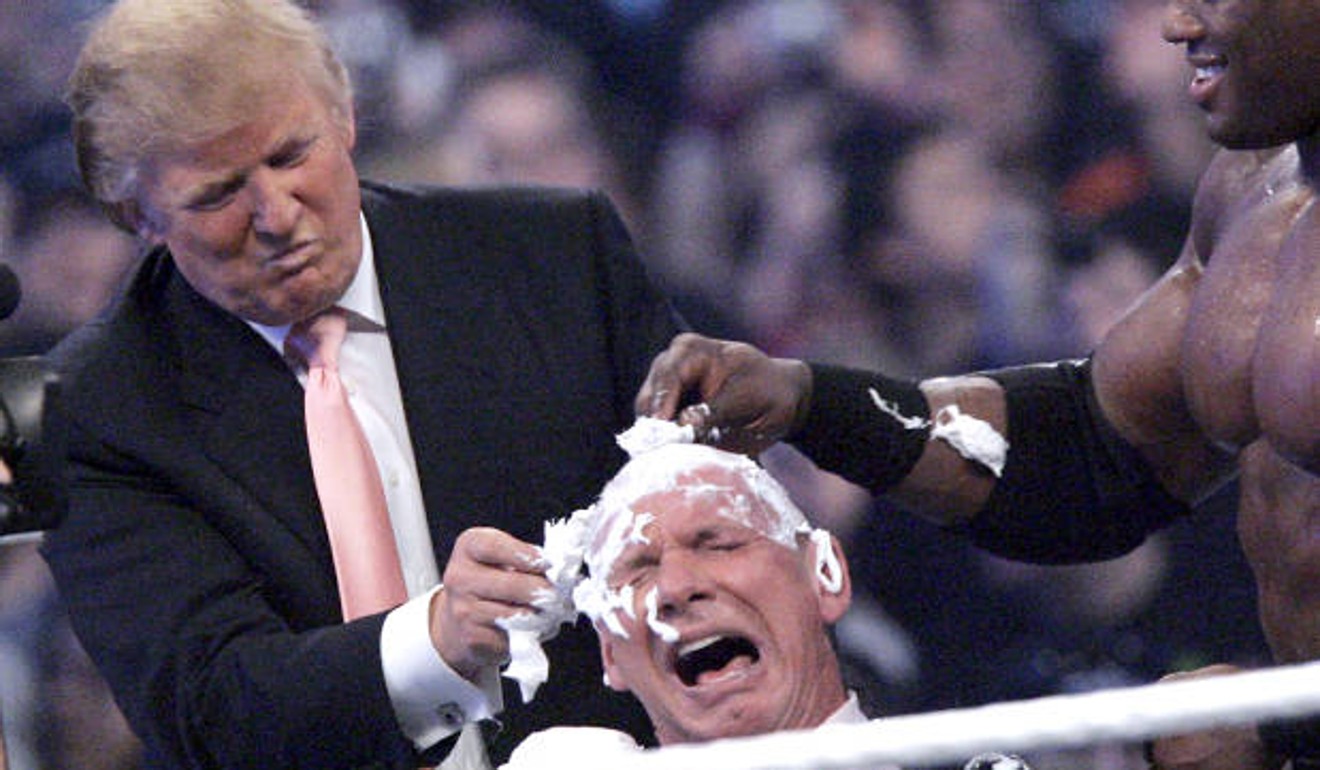
Brock Lesnar play-fighting Cain Velasquez in Saudi Arabia is a sign WWE is flailing
- Two former UFC heavyweights ‘square off’ in a WWE match that looks like they’re acting out a play of an actual MMA fight
- Match tells a wider story of a pro wrestling empire free-falling into obscurity
I’ll admit, I haven’t watched World Wrestling Entertainment in years. I think the last show I remember catching was Razor Ramon versus “The Heartbreak Kid” Shawn Michaels in a ladder match in 1994 and, from everything I’ve heard, I may have caught the WWE’s high-water mark.
To summarise, the WWE got into bed with Saudi to try to expand its fledgling fan base there. However, the killing of journalist Jamal Khashoggi has tainted the whole endeavour, while WWE’s female wrestlers weren’t even allowed to wrestle at the three previous events in Saudi before last week’s show.

In a way, it might be the perfect setting for a poorly planned and executed faux rubbish nostalgia fight. After watching all 88 seconds of this dumpster fire, it’s pretty clear what is happening: WWE is grasping at anything it can do to remain relevant as it slides into obscurity.
The fight fits into a larger metanarrative which, according to some, could tie into the UFC and its own rise and fall. The WWE stock hit a 52-week low in October, and the past few years have seen bad news follow bad news.
Alarm bells began to ring when a WWE quarterly report in April had principal impresario Vince McMahon doing damage control. He called it a “talent shortage”, but pundits were quick to point out it didn’t actually line up with the sidelining of some of his marquee draws being out with injuries.
Two of WWE’s flagship products – Raw and Smackdown – which are weekly shows that keep the narratives going for hard-core fans outside the big events like WrestleMania, are down in sizeable chunks in terms of viewership from 2018. In a larger look, Monday night’s Raw has seen a 32 per cent drop over the past five years heading into 2019.
Part of these losses are serious cause for concern. Looking at Smackdown viewership statistics, the biggest demographics to take a hit are teenagers and the coveted 18-35 demographic. This means wrestling is ageing out of many minds and a far cry away from the days of the Undertaker and Stone Cold Steve Austin when the sport’s premier stars were momentarily household names in the early 2000s.

This is not to say the WWE is closing up shop any time soon, but it appears global dominance is no longer in the cards for McMahon and company. The Saudi Arabia deal, for all its bad press, did sign the company a 10-year partnership which paid out close to US$80 million for two shows alone in 2018.
The WWE is also tied into long-term billion-dollar TV deals for the USA network to air Raw and for Fox to air Smackdown, and the Trump administration is giving the company an incredibly juicy corporate tax rate, which has been slashed by more than 10 per cent since the Republican took office.
Attendance at live shows is hurting, another bellwether of things to come even though the American economy appears to be chugging along. WWE subscriptions, another bread and butter revenue stream for the company, are also down.
The WWE also has to contend with All Elite Wrestling (AEW), a new outfit which launched in October on US network TNT. While I’m sure McMahon and his minions aren’t shaking in their boots, even losing a small chunk of viewers hurts in the long run as fans leaving can have a cascading effect.
When you look at the WWE, it’s tough not to look at two of its biggest superstars as of late for some semblance of how this all adds up, or subtracts. Dwayne “The Rock” Johnson, as we all know, has gone on to become one of the world’s most bankable movie stars, while Dave Bautista has fared quite well, starring in the Guardians of the Galaxy franchise along with some other A-list films.
Both hit a point in their WWE careers where they couldn’t get any bigger and were able to use their wrestling stardom to launch out of that world and into the mainstream entertainment realm.

Lesnar was never able to do this, for a number of reasons, always returning to the WWE after trying his hand at some extracurricular endeavour, and the 37-year-old Velasquez is an ageing MMA star looking to cash in on his long-gone heyday atop the UFC, which is also facing a viewership conundrum. Sounds like three separate entities all looking back longingly on the glory days.
Lesnar and Velasquez’s fight, staged as a rematch of their actual 2010 fight, was just as forgettable. There are a number of allegories here at play, about the rising and falling tides of the WWE and the UFC. Their fates may not be interlocked, but run parallel, as it appears fans are turning elsewhere for their sporting endeavours.
The Lesnar-Velsaquez “rematch” was a sign of the times for the WWE, a company trying to pull out all the stops to stop the bleeding on what was once a monumental sports entertainment empire. Nostalgia fights are not a good sign because they tell fans and viewers alike that the best times may already be behind them.

